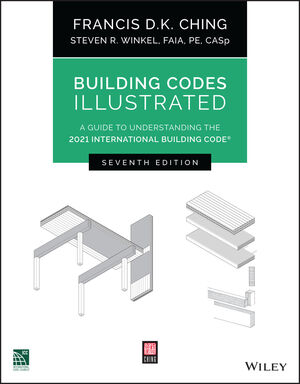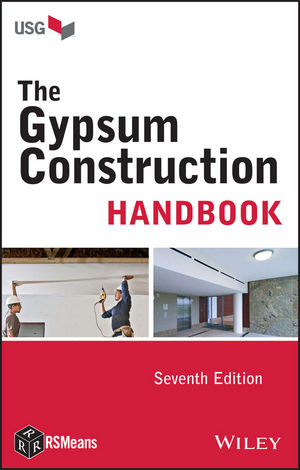It’s only a guess but I bet since 2003 this column has addressed the GA-214, Levels of Gypsum Board Finish document more than any other topic. Since early 2010, it has been addressed twice. Like it or not, we must tackle the subject again.
Two significant changes are being considered by the GA-214 signatory parties. A revision process is being initiated to accommodate discussion of the proposed modifications. The five signatory parties are each independently reviewing the proposed changes.
The First Option
The first proposed change adds language to the base document to address the finishing of interior non-paper-faced gypsum panel products. (For simplicity, I’ll generally call them interior panel products hereafter.) In contrast to traditional paper-faced gypsum board, interior panel products typically have either a glass mat facing or a fiber-reinforced core that has no facing whatsoever. Both paper-face gypsum board and interior panel products have a core that is largely gypsum.
Glass mat-faced interior panel products evolved from exterior sheathing and roofing products that came to the market in the very early 1990s. Unlike their antecedents, the interior mat-faced panels are specifically designed for installation in an interior location where they can create a surface suitable to receive decoration. The fiber-reinforced panels have been available for decades; they also can be installed in areas that require decoration.
Because glass mat-faced and fiber-reinforced interior panel products are finished using standard joint treatment materials and techniques, it is appropriate to address the finishing of both in GA-214. However, two issues must be recognized before interior panel products can be fully integrated into the text.
Finishes
One, the manufactured face of an interior panel product has a slightly different surface texture when compared to conventional paper-faced gypsum board. Two, subtle differences between the glass mats used by different manufacturers create finishing conditions that can vary slightly between panel manufacturers. Taken in tandem, the issues make it a challenge to create universal language that will enable a finisher to meet customer expectations and comply with manufacturer requirements.
To resolve the impasse, the current proposed language uses the final finish specified to determine the finishing criteria for an interior panel product. The proposed language acknowledges that a Level 0 through 3 finish is typically used in a location or in an application where a board or panel is concealed or is covered by a heavy texture or wallcovering. In such a location, there is no difference between finishing an interior panel product and gypsum board. The existing text in GA-214 can be used for both materials without modification.
Instead, the preliminary language focuses on Levels 4 and 5 where it recommends following guidelines for panel finishing established by the manufacturer of the interior panel product. Level 4 and Level 5 finishes are often painted and are generally used in exposed locations where subtle finishing issues can arise. To an occupant, “it’s all drywall” and it should look like drywall is supposed to look. The preliminary language acknowledges this concept as well as the delicate differences between interior panel products while simultaneously drawing a distinction between an exposed and an unexposed condition.
Interior panel products are rapidly becoming accepted in the marketplace and the need to have a standardized benchmark for panel finishing is becoming apparent. If a new edition of GA-214 is created, it likely will incorporate language addressing the finishing of interior panel products in some manner. Without the change, there is little need or incentive to modify the document.
Another Option
The second proposed change adds a “mock-up” requirement to GA-214. A mock-up is a full-scale model of a representative area in a project that is used to establish a reasonable series of esthetic benchmarks. Subsequent construction is then judged against the quality of the mock-up to determine if the final product is acceptable. A good example is a hotel project where a single hotel room is completely finished prior to, or at an early stage of, the project. Each time a subsequent room is completed, it is compared to the mock-up and evaluated for quality. Mock-ups also help to determine if furniture and fixtures will fit in rooms as designed.
Mock-ups are a testy subject. The need to add a requirement for one to GA-214 always creates considerable disagreement within the application community. Whether the mock-up concept will survive the entire review process is still to be determined. At the time of column writing, it remains an open debate.
As presently written, a mock-up will be required if mandated by the project documents. If incorporated into a project, the mock-up requirement will apply to both paper- and non-paper-faced materials. The language also requires the acceptance of a “visual benchmark” by all involved parties.
In contrast with the subject of finishing interior panel products, which was briefly first discussed when GA-214 was modified in 2010, adding a mock up requirement to the document has been discussed repeatedly during the two decade life of GA-214. The concept has never survived an entire review process.
Revising GA-214
The revision process of GA-214 can become protracted because the document is the cooperative product of five separate organizations: the Gypsum Association; The Association of the Wall and Ceiling Industries-International; the Ceilings and Interior Systems Construction Association; Painting and Decorating Contractors of America; and the Drywall Finishing Council. While the five signatory members all have an interest in the finishing of gypsum board, as individual entities they don’t necessarily view every technical issue from the same perspective.
The first time the original 1990 document was revised, the process took four years from the time the initial draft was created until it was finally approved by the signatory organizations. As we have emphasized in the past, any discussion of GA-214 creates significant passion and revising it requires patience.
Changes are expected as the organizations debate and deliberate the content of the final product. Concepts that seem simple and obvious in the early stages of a revision process often fail to pass following lengthy scrutiny. One should expect that the finished text may look quite different than the current draft text. Draft text modifications may have occurred by the time you read this column.
Like many documents, GA-214, Levels of Gypsum Board Finish is continuing to evolve and the changes discussed herein are simply a part of that process. With any luck, revising the document won’t take four years; however, this is the Levels of Finish document. Throw the rules out the window and hang on for the ride.









